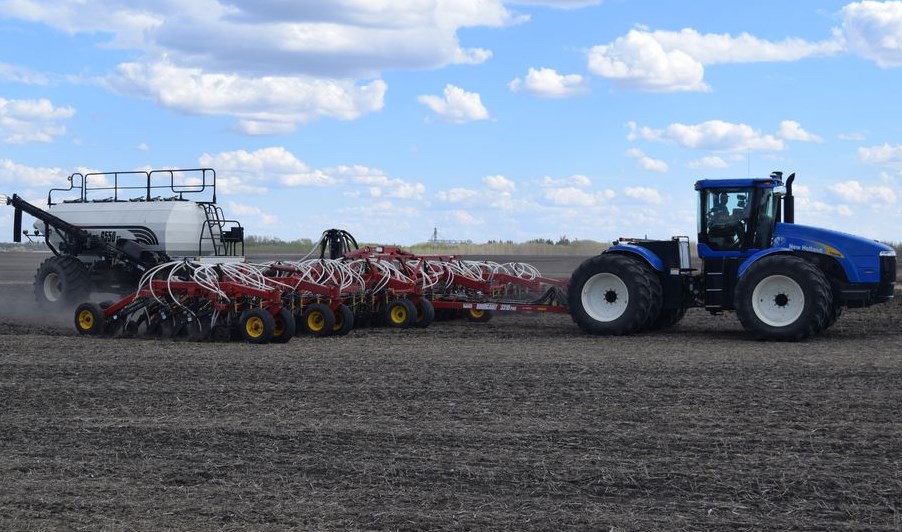Seeding is well ahead of schedule in Saskatchewan, and rain this past week has helped maintain adequate topsoil moisture levels, according to Thursday’s provincial crop report.
Progress currently sits at 72 per cent — an increase of 23 points from last week’s report — and ahead of the five-year average of 60 per cent and the 10-year average of 64 per cent for this time of year.
Farmers in the southwest are nearing completion at 89 per cent, followed by the northwest and west-central regions at 81 per cent, the northeast at 74 per cent, the southeast at 63 per cent, and the east-central region at 58 per cent.
The report indicates most pulse and spring cereal crops are seeded, while oilseed crops are the last to go in. Field peas are 92 per cent seeded, lentils are at 90 per cent, and chickpeas at 83 per cent. Among cereals, triticale and durum lead with 87 per cent seeded, followed by spring wheat at 80 per cent, barley at 71 per cent, canary seed at 56 per cent, and oats at 55 per cent.
Mustard leads among oilseeds at 84 per cent, followed by canola at 58 per cent and flax at 50 per cent. Soybean and perennial forage seeding remains behind, with just 31 per cent seeded.
“I’m hearing there’s good emergence of these crops throughout most of the province which is definitely a good sign,” said Tyce Masich, crops extension specialist with the Saskatchewan Ministry of Agriculture.
Masich said dry weather helped producers make significant progress before the rain.
“Producers are either half-done or they’re looking to wrap up here in the next week to ten days,” he added.
Most rainfall occurred in the southeast, although Masich noted precipitation was also recorded in the southwest and scattered areas of the west-central and east-central regions. There was little rain in the northeast and northwest. The Lampman area in the southeast received the most with 139 millimetres, followed by 104 mm in Oxbow, 100 mm in Frobisher, and 93 mm in Carnduff.
Rain last week helped maintain adequate topsoil moisture across cropland, hayland, and pastureland. Provincially, cropland topsoil moisture is rated as six per cent surplus, 69 per cent adequate, 22 per cent short and three per cent very short. Hayland moisture is rated as three per cent surplus, 64 per cent adequate, 27 per cent short and six per cent very short. Pastureland moisture levels are two per cent surplus, 60 per cent adequate, 31 per cent short and seven per cent very short.
While seeding remains the primary focus for grain farmers, they are also picking rocks, spraying and land rolling. Livestock producers continue preparing to send cattle to pasture.
Farmers are reminded to be aware of power lines and other hazards when operating large equipment, and drivers are urged to take extra care when passing farm equipment on the road.




